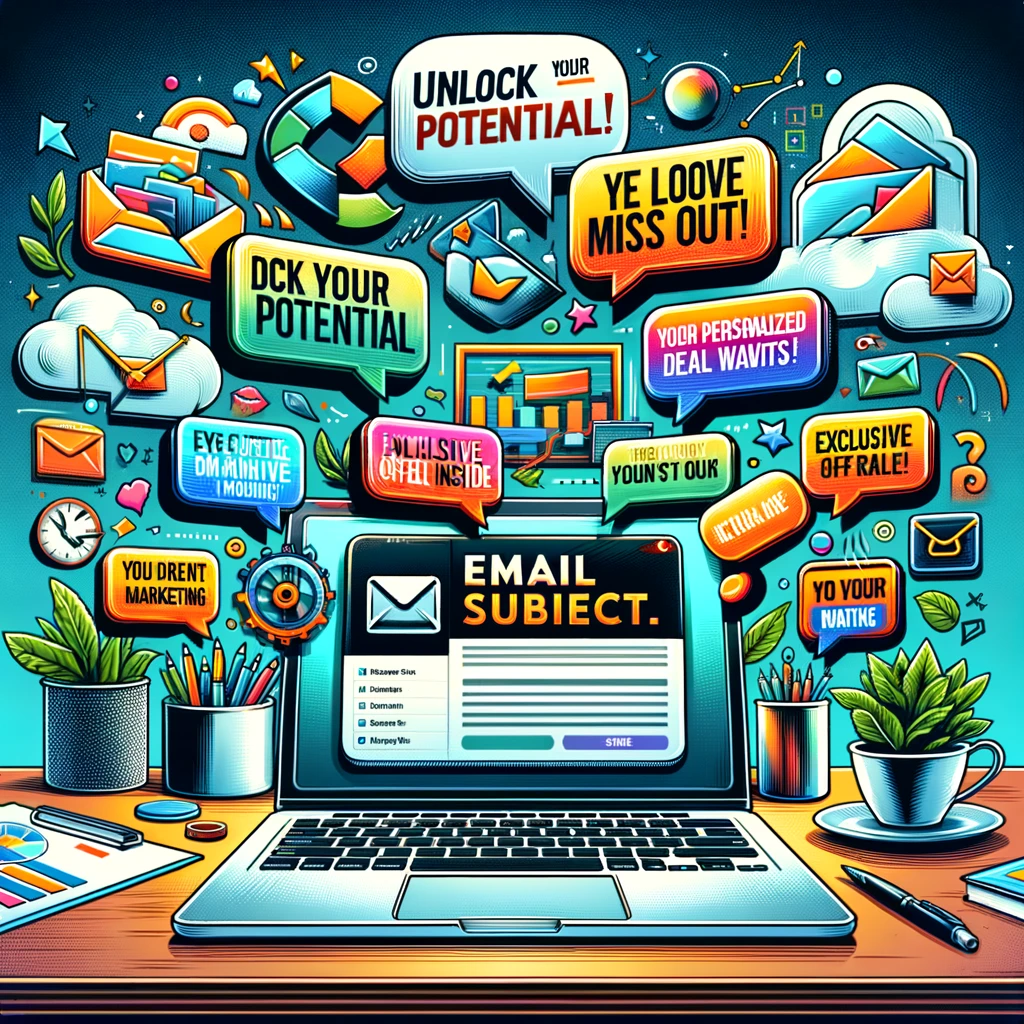
Busted: The worst email subject lines, ever!
Successful email subject lines — the ones that inspire readers to click on them — are eye-catching, attention-grabbing, and tempting. But there are also annoying, boring, careless, lazy, desperate, or (worst of all) deceiving subject lines that give all other hardworking subject lines a bad rap. The purpose of crafting enticing subject lines in your email marketing efforts is to achieve an open, which could eventually lead to a sale. There are good and bad ways to go about gaining it. Let’s bust the worst subject lines ever and kick these 15 bad habits to the curb:
- THE ALL CAPS SCREAMER — It’s tempting to write a word in all caps to emphasize importance; that said, all caps come across as if you’re SCREAMING! And, that’s the last thing you want to do to a current or potential customer. To highlight something, consider using one exclamation point or words/phrases like “New,” “Last Day,” or “Don’t Miss Out,” to create a sense of urgency or excitement. Let your copywriting skills, not your caps lock, convey the importance of your message. The same goes for wAckY CApS — Don’t go CRazAY.
- The Punctuation Abuser!!!!! — Like all caps, punctuation shouldn’t be abused. Use more than one punctuation mark and it seems as if you’re yelling (!!!), you don’t remember proper punctuation rules, or you think everything is vitally important. One exclamation point or one question mark serves its purpose just fine.
- The From Label Repeater — The “from” label of your email should usually be your company name or the name of the person a subscriber has the relationship with. With that in mind, there’s no need to repeat your company name in your subject line. Repetition is not only redundant and obvious, but it takes up precious real estate in your delightful subject line.
- The Generic Snore, i.e. “[Your Company Name Here] Weekly Newsletter” — Telling your recipients what they can expect from your email will go the distance. Your subscribers already have loaded inboxes, so give ’em the goods right away and tell them what’s inside. Generic subject lines like, “Weekly Newsletter,” “Monthly Wrap Up,” or “Daily News” aren’t enticing or descriptive and they’re a bore. When sending an email newsletter, highlight your two most interesting topics in the subject line and your third in the pre-header.
- The Deceiving Sneakster, i.e. “Get 75% off the whole store… just kidding!” — Deceiving anyone doesn’t bode well in the long run, ever. Plus, when it comes to your subject line, lying or including misleading information is actually illegal! Yup, you read that correctly. Meet CAN-SPAM, the federal act that states an email’s subject line must accurately reflect the content of the message. If people are subscribed to your emails, legally, they want to hear what you have to say, so give it to them straight.
- The Fake Reply — Including Re: in your subject line indicating that it’s a reply is sneaky. “Oh look, someone’s replied to an email I sent them! But wait, I don’t know who this is? What’s this all about?” Sure, you’ll get opens, but the key is to engage and connect with your readers. Much like other deceitful tactics mentioned above, this tactic will likely get your message deleted. If you really want to entice readers, try asking a question.
- The Emoji Fanatic — We love the skillful deployment of emojis, some of which are actually considered art, in subject lines and emails. But as with many things in life, too much of a good thing can be terrible. When used too frequently, especially in the space of one email, emojis go from cute to “cut it out!” Make a greater impact by using only one or two, and not every time.
- The Desperate Crier, i.e. “Open Me!” — Begging for an open is hitting rock bottom and won’t give you the engagement you desire. Put on your copywriting hat and come up with something clever; we know you’ve got it in you.
- The Grammar/Spelling Mistake Eyesore — Everyone makes mistakes, so everyone also deserves a “Get out of jail free” card when it comes to a grammar or spelling mistake. Once, anyway. Prevent grammar and spelling errors by using spell check; asking at least one other person to proof your entire email including the subject line; and, when in doubt, referring to these sources of wisdom and expertise: The AP Stylebook, The Chicago Manual of Style, Dictionary.com, and Grammar Girl.
- The Novel — No one wants War and Peace to show up in their inbox, especially when their smartphone screen will cut off everything after the first handful of words. With subject lines, less is more. In fact, studies have shown that people are more likely to click subject lines when they max out at 49 characters including spaces. (Here’s a quick and free way to count the characters in a line of text.) Don’t give everything away in your subject line — that’s your email’s purpose. Keeping the subject line short and to the point will entice your recipient to open and to read on.
- The Premature Sender, i.e. “test.” — Whoops, did someone accidentally hit “send” without a proper subject line? It happens, and when it does, people love to point it out! Uh oh. Always give your email a proper subject line right from the get-go. Going in, you may have an idea what your email is going to be about, so give that subject line a shot and change later if necessary. See above about asking someone to proofread your entire message, too.
- The Copycat, i.e. sending multiple emails with the same subject line — If you’re sending a series of emails, say a promotion over a course of days or weeks, resist the urge to use a subject line more than once. Repetitious subject lines make people’s eyes glaze over. Even worse, they may delete the email thinking you either 1) sent it to them twice, or 2) they already read it. Rework your original subject line with a slightly different spin.
- The Pre-Header Repeater — Repeating your subject line in the pre-header qualifies as the worst pre-header ever. A pre-header acts like a secondary subject line and is your second chance at grabbing a potential reader’s attention. Take advantage of this opportunity to tell readers what other wonderful things they can read inside. Does your subject line feel too long? Cut it in half and put the rest in your pre-header.
- The One Word Spam Alert, i.e. “Hi” — If you’re trying to catch a recipient’s attention by being mysterious, do so by asking a question. Including only one word in your subject line and hoping it creates curiosity really just screams “spam alert!”
- The False Alarm, i.e. “URGENT!” — “Urgent,” “exclusive,” “breakthrough,” “pioneering,” “revolutionary,” and many other fluffy adjectives are so overused as to be nearly meaningless. If something isn’t really “urgent” or “breaking news,” exaggerating can let readers down. Plus, many people don’t open their email until days after they receive it, so the sense of urgency may be lost.
Subject lines are the gateway to clicks and conversions. By spending a few more minutes crafting subject lines that make readers sit up and take notice for all the right reasons, you’ll avoid these subject line fails with ease.
Join 140,000 small business owners
Editor’s note: This blog post was originally published in January 2014 and has been revamped and updated for accuracy and relevance.
© 2017 – 2018, Contributing Author. All rights reserved.
 SUBSCRIBE
SUBSCRIBE 


